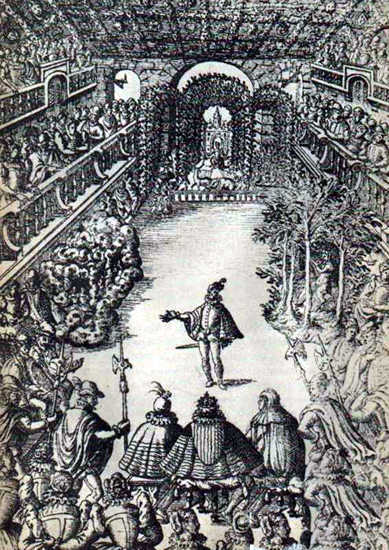Early Ballet

Ballet began in 1581, when Catherine De Medici brought a company of entertainers from Italy to perform at the wedding of her son's favorite friend. The name of the first ballet was Le Ballet Comique de la Reine (The Comic Ballet of the Queen). Ballet became an elegant pastime for the Monarch and his court. It is said that Catherine encouraged her son's interest in ballet to occupy his time while she ruled the country. You might say that ballet as we know it was born when the acrobatics of the professional and the aristocratic grace of the courtier were united. It should be understood that prior to Le Ballet Comique de la Reine such performing had been seen in the Italian court since the Renaissance. It is also just a rumor that I was in the chorus of the ballet.
In early ballet, dancers wore masks as part of their costumes, and all the roles were danced by men. When there was a feminine role a slender man or boy wore a woman's costume and wig, the customary mask, and danced to portray the character in the ballet. In 1681, women began to dance in ballet de cour, and about this time ballet became a professional art instead of amateur entertainment. Louis XIV was a great lover of ballet. He appeared in several of the court entertainments and in 1661 founded a Academie de Danse, in Paris, where ballet was taught as a profession. The first director, Jean Baptiste Lully, moved ballet from the confined space of the ballrooms to a stage, where dancers could move more freely. A later director, Jean Philippe Rameau, encouraged dancers to use leaping and jumping motions when they danced, where as until then dancers had glided over the floor.
(First published July 1999)